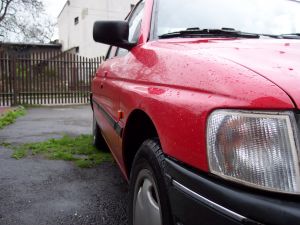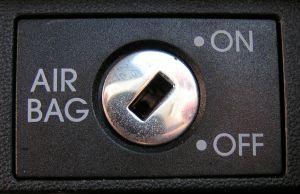The Companies with the Best High Risk Auto Insurance
 When you have had too many accidents or have been convicted of DUI, sometimes, traditional auto insurance companies will not cover you anymore. Even people with several tickets or those under the age of 25 can be considered high-risk drivers.
When you have had too many accidents or have been convicted of DUI, sometimes, traditional auto insurance companies will not cover you anymore. Even people with several tickets or those under the age of 25 can be considered high-risk drivers.
Your ZIP is your pass to FREE auto insurance quotes – just type it in the box!
If you are in the market for high-risk auto insurance, you should look for a few things. So what are the best companies to go with for high-risk auto insurance? It depends on your situation and your location.
Your Current Company
Even if you have been convicted of driving under the influence, your best bet may still be with the company you currently have insurance with. However, this depends on your circumstances.
 Once you have been bumped into the high-risk category, call your insurance agent or the company’s customer relations line and talk with someone about how this will affect your coverage.
Once you have been bumped into the high-risk category, call your insurance agent or the company’s customer relations line and talk with someone about how this will affect your coverage.
It may be that they will still cover you, but will just raise your premium. This is more likely if you have other policies with them as well.
For instance, say you have your homeowner’s insurance with them and your spouse’s car insurance.
Because you already have other policies with your current insurance company, they may be willing to continue your coverage at a higher rate despite your high-risk status.
However, this rate may be lower than other companies will charge because you are getting a discount for having multiple policies.
This is absolutely the best way to go when parents need to get insurance for their teen drivers. All teenagers, no matter what their personality or driving record is, are considered high risk. Getting them their own policies is much more expensive than just adding the teen onto his or her parents’ policy.

Adding a teen driver will usually increase premium costs by nearly 50% or more, depending on how many cars are on the policy. However, this is still cheaper than the price a teen would pay for solo coverage.
To minimize the effect a teen has on his parents’ insurance, he should not have his own car, but should be a secondary driver on mom’s and dad’s cars. If this isn’t practical, expect the premiums to go up more than 100%.
The Company with the Lowest Premium
If your company will not cover you now that you are considered high risk, the best thing to do is to shop around to see who has the best deal on high-risk coverage.
Do not just look at the price, though. Pay attention to how much coverage you are getting for what you are paying. For example, some high-risk companies will only provide liability coverage plus any other coverage types, like uninsured motorist or personal injury protection, that are mandated by the state. They do not provide comprehensive and collision coverage.
This can be a real problem if you are paying off a car loan that requires you to have this coverage. You will either need to find a company that will cover it or get two different policies, which is hard to do and also can be very expensive.
Some high-risk policies will only provide the minimal amount of liability required by your state laws. They do this to keep costs down. As a high-risk driver, they expect you to be involved in accidents and filing claims — and they want to keep their expenses down as much as possible.
However, this can put you in a real bind. For instance, if you live in California, where the state only requires $5,000 in property damage liability, and you hit and total a $20,000 car, the insurance will only pay that driver $5,000. You will be expected to come up with the extra $15,000 out of your own pocket.

Many people do not have that kind of money. That is why the insurance industry encourages people to buy more coverage than the states require. You are more fully protected this way.
So shop around and see what the best value for your money is. You want the most coverage for the best deal. That is the best company for you.
Assigned Risk Company
If your current insurance company denies you coverage and you cannot find any other company to accept an application from you either, do not give up. Each state has a special program to help drivers just like you. It is called the assigned risk program.
The state sets up an agreement with certain high-risk insurance companies. These carriers agree to accept high-risk drivers in that state who meet certain requirements. In exchange, they get certain considerations from the state.
If you meet the criteria, like having been turned down by at least two or three other auto insurance companies, then the state high-risk groups have to accept you.
That is the good news.
The bad news is that it can be expensive. Sometimes, it is more costly than other high-risk auto insurance companies. The other issue is that you are more restricted as to how much insurance you can buy. For example, the Texas program, TAIPA, provides $30,000/$60,000 bodily injury and $25,000 property damage liability, $2,500 personal injury protection, and 30/60/25 in uninsured motorist coverage.
As you can see, you cannot get comprehensive and collision coverage with this. Moreover, you cannot increase the liability or personal injury protection limits.
Why You Are Considered High Risk
There are several reasons you might be considered a high-risk driver. They would include:
- Having a DUI conviction.
- Being involved in multiple accidents or receiving multiple tickets within a short amount of time.
- Being under 25.
- Having your license revoked.
- Having your insurance canceled, even if it was because you did not pay your bill.
- Having extremely low credit scores.
Ways to Lower Your High Risk Premium
While there is no getting around the fact that high-risk insurance policies cost more, there are a few ways to save some money on them.
The first is to pay attention to your vehicle. If you still have a car payment or have an expensive vehicle, consider getting a different car until you can lower your points, or get the accidents off your record.
 Consider selling your car and getting a vehicle you will not have a car payment on. An older used car will cost less to insure than a newer car.
Consider selling your car and getting a vehicle you will not have a car payment on. An older used car will cost less to insure than a newer car.
Moreover, if you do not have car payments to make, some of that money can go to paying the increased auto insurance costs. In addition, you could get away without paying for comprehensive and collision.
The kind of car is important. Sports cars will cause even standard insurance rates to rise quite a bit. Some high-risk insurers will not even cover sports cars. If they do, the costs will be astronomical.
Insurance companies consider sports cars risky, and combining a risky driver with a risky car is a prescription for very high insurance rates.
Try to find a good used car with some safety features that can save you money as well. Things like air bags, especially side curtain and back seat air bags, and anti-lock brakes, should knock a little off your insurance rates, as they could save the company money on medical costs.

If you are able to get comprehensive and collision, keep your deductibles high. In exchange for agreeing to pay a higher portion of a car repair, insurance companies will give you a break on the premium.
Other Money-Saving Tips
If you have high-risk insurance, find out if taking some sort of defensive driving or driver’s safety course would help bring your insurance costs down. As a high-risk driver, you probably need the help anyway, and many insurance companies will give you a discount for completing such a class.
The best thing you can do is to keep your driving record as clean as you can.
Usually, if you have no further accidents, tickets, DUIs, and you pay your insurance bills on time, you will not be considered high risk after three to five years, depending on the state.
Train yourself not to speed, run red lights, or to take unnecessary risks on the road.
In addition, do not, under any circumstances, get behind the wheel if you have been drinking. Paying for a taxi is far cheaper than paying high-risk insurance bills. Once you have established a clean record for a few years, you can go back to standard car insurance and cheaper insurance premiums.
 If your credit score is bringing your insurance costs up, take steps to raise your credit. Get a copy of your credit report and make sure that the information on there is accurate. Then set up a payment system to catch up on any delinquent accounts.
If your credit score is bringing your insurance costs up, take steps to raise your credit. Get a copy of your credit report and make sure that the information on there is accurate. Then set up a payment system to catch up on any delinquent accounts.
Start paying your bills on time. If your bank offers online bill paying, you can use this to make sure you never miss a payment again.
The Federal Trade Commission has a pamphlet called “Building a Better Credit Report,” which has more information about how clean up your credit report. Insurance companies do use credit scores to help determine your insurance costs, so it definitely pays to be proactive and take steps to improve your credit score.
Find the best car insurance rate for you for FREE just by putting your ZIP in our box!
